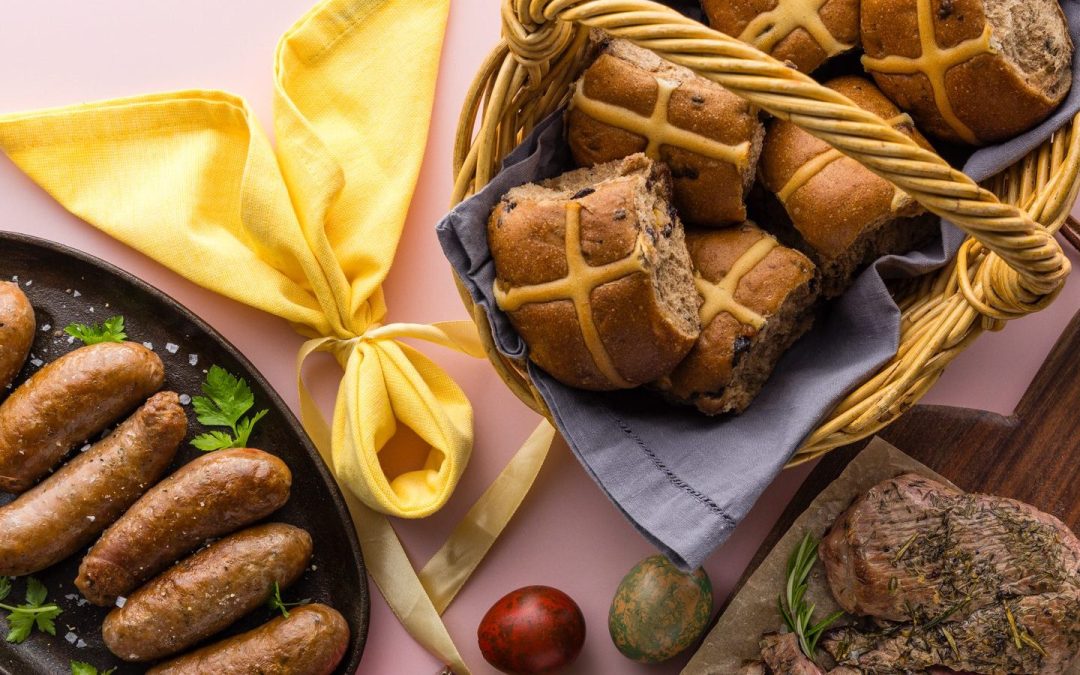
Preach the Prebiotics, Probiotics and the Plant Power!
The 2 P’s: prebiotics and probiotics! We’ve all heard these words, and heard them be emphasised as ‘good for us’ and ‘gut friendly’, but do we really know how or why?
The importance of gut health has become increasingly popular and publicised in recent years, and the terms prebiotics and probiotics accompany the broad umbrella term of gut health. So, let me break it down for you – and ensure you know the basics behind prebiotics and probiotics as well as their relationship with gut health.
Get to know the ‘2 P’s’:
Prebiotics and probiotics are microbiota-management tools for improving host health (AKA, us as individuals. As we are the hosts of our own bodies) (1). Aside from diet, prebiotics and probiotics serve as the most frequently used substances, consumed with the aim to sustain a healthy microbiome or alternatively, restore balance when it is believed that one’s bacterial homeostasis has been disrupted due to disease or illness (2). Prebiotics and probiotics can be found in a variety of foods and supplements and their benefits extend beyond just gut health alone.
Prebiotics and probiotics are tools used to manage our microbiota and improve our overall health. People often consume them to maintain a healthy microbiome, or to restore balance if disease or illness has disrupted their natural bacterial balance. These substances can be found in foods and supplements and offer benefits beyond just gut health.
Following so far? Now, let’s delve a little deeper into each of the P’s and get to know them on more of a personal level!
#1 P: Prebiotics
Prebiotics are defined as a group of nutrients, that benefit the gut by being broken down by the gut microbiota for fuel (3). Within recent years, research of the relationship between prebiotics and the health of humans has been an increasing area of interest. There are a several types of prebiotics, the majority of them are subgroups of carbohydrate groups known as “oligosaccharides” (Oligo = many, saccharides = sugars) (3).
Naturally, prebiotics exist in a variety of dietary food products including the following: asparagus, sugar beet, garlic, chicory, onion, Jerusalem artichoke, wheat, honey, banana, barley, tomato, rye, soybean, human’s and cow’s milk, peas, beans, etc., and recently, seaweeds and microalgae (3).
#2 P: Probiotics
Probiotics are live microorganisms that, when administrated in correct amounts, act as a health benefit to the host (4). Probiotics are available in a wide range fermented foods (yogurt, kefir, sauerkraut, kimchi, smelly cheeses etc) or can be purchased as supplements (5).
There is evidence to suggest that consuming probiotic rich fermented foods can introduce live bacteria, into the gut, which may potentially colonisze and enhance the diversity of your microbiome (6)
So, with that being said:
In summary, prebiotics and probiotics are important for maintaining a healthy gut, which in turn supports overall health and wellbeing. Prebiotics ‘feed’ our microbiome, whereas probiotics are live bacteria that can live in our guts. Don’t forget though, even with a diet rich in pre and probiotics, when it comes to gut health it’s important to hero a holistic approach, with a focus on consuming wholefoods, being active, sleeping well and managing stress.
Let’s summarise!
So, now that we have covered the basic terminology of prebiotics and probiotics, it’s time to tie it all together!
No matter what way you cut it, whole plant foods are fundamental to a healthy diet and a healthy gut. One of the most important things we can do for a diverse and happy microbiome is eating a wide variety of plant foods (perhaps 30 a week is the magic number)! We can’t talk about gut health without mentioning pre and probiotics – both of which are found in whole foods, which should always be the focus over pills and potions we say!
Thankfully, Fresh Start makes gut health easy, featuring a wide range of plant foods (as many as 8 per plate in our Gut Hero recipes!), and at least 2 servings of veggies per person.
Reference’s
- Sanders, M. E., Merenstein, D. J., Reid, G., Gibson, G. R., & Rastall, R. A. (2019, Oct). Probiotics and prebiotics in intestinal health and disease: from biology to the clinic. Nat Rev Gastroenterol Hepatol, 16(10), 605-616. https://doi.org/10.1038/s41575-019-0173-3
- Quigley, E. M. M. (2019, Jan). Prebiotics and Probiotics in Digestive Health. Clin Gastroenterol Hepatol, 17(2), 333-344. https://doi.org/10.1016/j.cgh.2018.09.028
- Davani-Davari, D., Negahdaripour, M., Karimzadeh, I., Seifan, M., Mohkam, M., Masoumi, S. J., … & Ghasemi, Y. (2019). Prebiotics: definition, types, sources, mechanisms, and clinical applications. Foods, 8(3), 92.
- McKenzie, Y. A., Thompson, J., Gulia, P., & Lomer, M. C. (2016, Oct). British Dietetic Association systematic review of systematic reviews and evidence-based practice guidelines for the use of probiotics in the management of irritable bowel syndrome in adults (2016 update). J Hum Nutr Diet, 29(5), 576-592. https://doi.org/10.1111/jhn.12386
- Nelms, M., Sucher, K. P. (2019). Nutrition Therapy and Pathophysiology, 4th Edition. [VitalSource Bookshelf 10.0.2]. Retrieved from vbk://9780357390597


